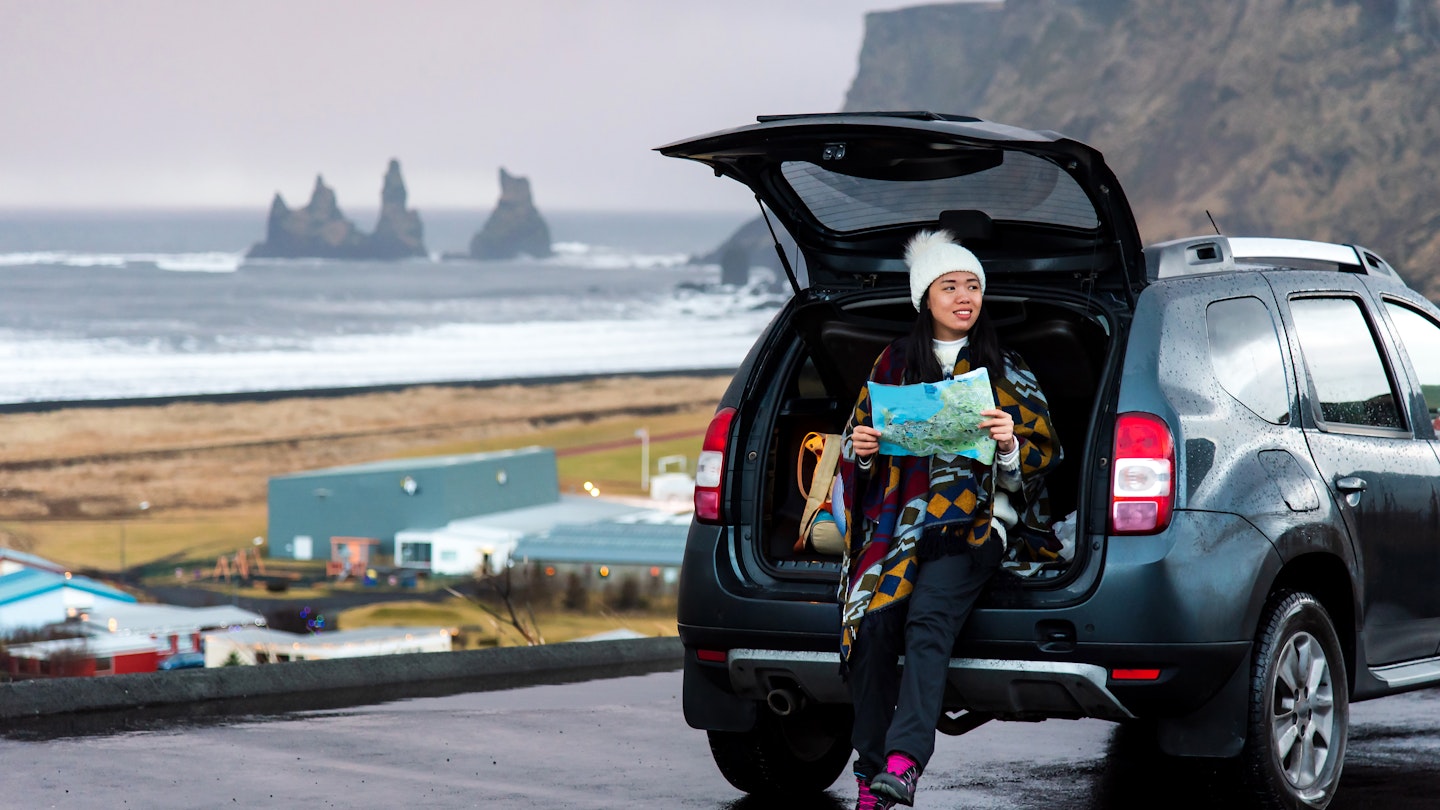Back in the day, when Iceland’s founding fathers decided to make Reykjavik the nation’s capital, they were indeed doing future visitors a tremendous favor. The southwestern corner serves as an excellent base for exploring many of the country’s most iconic sights, from glacial caves to steaming lagoons.
Here are four of the best day trips from Reykjavik, available year-round.
The Golden Circle
Why go? The route loops three iconic sights: Þingvellir, Geysir, and Gullfoss
The famous Golden Circle is a 250km (155-mile) route covering two continents – yes, continents! The first stop on the itinerary is Þingvellir National Park, which marks the tectonic plate boundaries for Europe and North America, pulling apart the landscape with canyons and cracks. Additionally, this UNESCO World Heritage site holds historical significance as Iceland’s parliament, Althingi, was founded at Þingvellir in the year 930 CE.
Geysir has been Iceland’s world-renowned natural phenomenon since the advent of printed illustrations. It has also inspired the English word geyser, referring to a periodically spouting hot spring. To the surprise of many, the old Geysir has long since retired; today, the spouting icon of Iceland is the neighboring Strokkur, which erupts every 10 minutes, give or take.
A 15-minute drive from Geysir leads you to Gullfoss, a spectacular waterfall cascading down a powerful glacial river. The name means “golden waterfall,” and on a sunny day, expect a breathtaking rainbow. Visitors need to walk about 500m (.3 miles) from the parking lot for a close-up view of this landmark.
A final tip: The Icelandic Tourism Board operates digital counters monitoring traffic to major sights by the hour, an excellent tool for travelers seeking to avoid large crowds at Gullfoss and Geysir.
Choosing a Golden Circle Route from Reykjavik
The shortest version of the Golden Circle goes via Laugarvatn. Longer day tours take a wider loop around southern Iceland by extending to Flúðir and Selfoss. Side attractions include the 6500-year-old explosion crater Kerið and the geothermal lagoon at Gamla Laugin.
Langjökull Glacier
Why go? For snowmobile tours and the ice tunnel
Iceland’s second-largest glacier is open for visitors – literally. The glacier features a large human-made tunnel leading some 500m (.3 miles) into the ice cap. This unique adventure is operated by Into the Glacier and is only accessible via super-Jeep. Since the natural ice caves at the foot of glaciers collapse during warmer months, this tunnel ensures year-round accessibility.
Langjökull boasts spectacular snowmobile routes featuring breathtaking mountain vistas. The sheer desolation encountered while speeding across the glacier heightens the thrill of the experience. Excursions typically last about an hour.
How to Get from Reykjavik to Langjökull
Day trips from Reykjavik require at least 10 hours in total. Roads to the glacier’s base are only accessible by large vehicles, but arrangements can be made for pick-up where main roads conclude. For visits to Into the Glacier, this entails driving to Húsafell to the west; snowmobile tours operate on the southern side near Gullfoss Waterfall.
Blue Lagoon
Why go? To soak in a unique bath resort
When considering Iceland, one of the first attractions that likely comes to mind is the Blue Lagoon. Stepping into milky-blue water surrounded by a dramatic lava landscape embodies relaxation and luxury. Situated conveniently 20 minutes from the airport, it’s no surprise that it is Iceland’s most frequented tourist destination.
The lagoon possesses health benefits too. Silica within the water gives it its blue-green hue and creates a soft white mud on the lagoon’s floor, assisting with various skin conditions.
How to Get from Reykjavik to Blue Lagoon
Upon purchasing a ticket, guests can opt to pay extra for transportation from either Keflavík Airport or downtown Reykjavik. There are multiple bus operators in Reykjavik that provide scheduled services.
Hvalfjörður
Why go? For pristine hiking paths
A lengthy, winding drive down Hvalfjörður was once an unavoidable part of leaving Reykjavik to the west. However, in 1998, the opening of the underwater Hvalfjörður Tunnel considerably shortened travel time, making the picturesque Whale Fjord a peaceful detour.
One of Iceland’s tallest waterfalls, Glymur, welcomes those still traveling the scenic route around the fjord. However, you’ll need to embark on foot for this adventure. Prepare for a multi-hour trek offering spectacular views over Hvalfjörður. The path is a 7km (3-mile) loop starting in Botnsdalur at the fjord’s base, with moderate difficulty due to two steep hills.
How to Get to Hvalfjörður
A rental car is the most advantageous mode of transportation to visit Hvalfjörður. The tunnel is designed as the default route for drivers, making it easy to overlook the correct turn – be sure to look for signs pointing to Route 47.
Hvalfjörður’s Violent History
Historically, Hvalfjörður is notable for its deadly industries: whaling and warfare. During WWII, allied forces fortified the fjord’s entrance and established naval operations there. The preserved settlement of army barracks at Miðsandur farm and the War & Peace Museum recount its historical narrative.
Nearby lies a whaling station where baleen whales were processed for years. While the factory has been inactive since 2018, it remains unofficially open.





